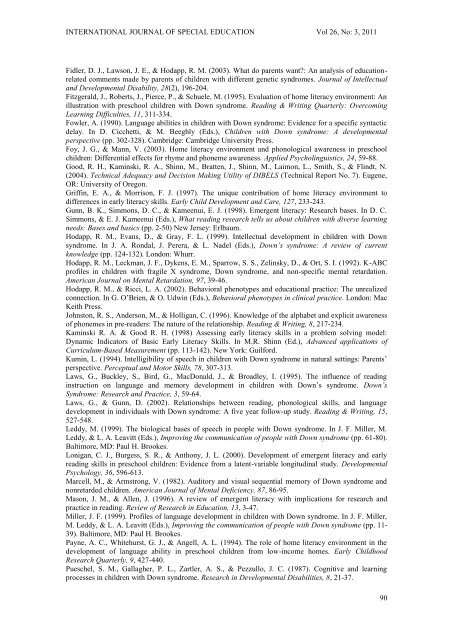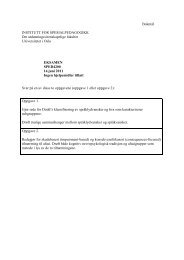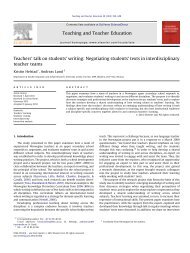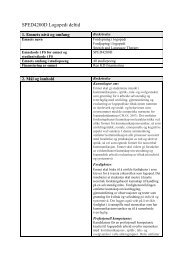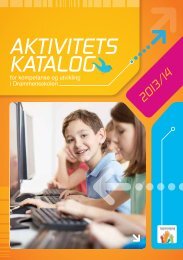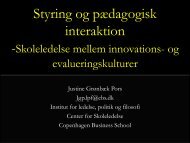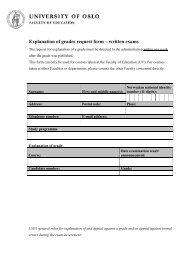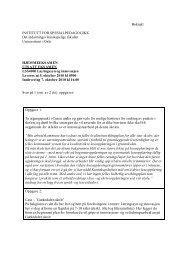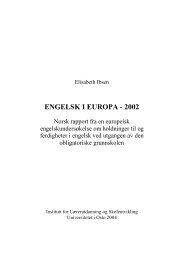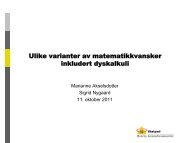International Journal Special Education
International Journal Special Education
International Journal Special Education
You also want an ePaper? Increase the reach of your titles
YUMPU automatically turns print PDFs into web optimized ePapers that Google loves.
INTERNATIONAL JOURNAL OF SPECIAL EDUCATION Vol 26, No: 3, 2011Fidler, D. J., Lawson, J. E., & Hodapp, R. M. (2003). What do parents want?: An analysis of educationrelatedcomments made by parents of children with different genetic syndromes. <strong>Journal</strong> of Intellectualand Developmental Disability, 28(2), 196-204.Fitzgerald, J., Roberts, J., Pierce, P., & Schuele, M. (1995). Evaluation of home literacy environment: Anillustration with preschool children with Down syndrome. Reading & Writing Quarterly: OvercomingLearning Difficulties, 11, 311-334.Fowler, A. (1990). Language abilities in children with Down syndrome: Evidence for a specific syntacticdelay. In D. Cicchetti, & M. Beeghly (Eds.), Children with Down syndrome: A developmentalperspective (pp. 302-328). Cambridge: Cambridge University Press.Foy, J. G., & Mann, V. (2003). Home literacy environment and phonological awareness in preschoolchildren: Differential effects for rhyme and phoneme awareness. Applied Psycholinguistics, 24, 59-88.Good, R. H., Kaminski, R. A., Shinn, M., Bratten, J., Shinn, M., Laimon, L., Smith, S., & Flindt, N.(2004). Technical Adequacy and Decision Making Utility of DIBELS (Technical Report No. 7). Eugene,OR: University of Oregon.Griffin, E. A., & Morrison, F. J. (1997). The unique contribution of home literacy environment todifferences in early literacy skills. Early Child Development and Care, 127, 233-243.Gunn, B. K., Simmons, D. C., & Kameenui, E. J. (1998). Emergent literacy: Research bases. In D. C.Simmons, & E. J. Kameenui (Eds.), What reading research tells us about children with diverse learningneeds: Bases and basics (pp. 2-50) New Jersey: Erlbaum.Hodapp, R. M., Evans, D., & Gray, F. L. (1999). Intellectual development in children with Downsyndrome. In J. A. Rondal, J. Perera, & L. Nadel (Eds.), Down’s syndrome: A review of currentknowledge (pp. 124-132). London: Whurr.Hodapp, R. M., Leckman, J. F., Dykens, E. M., Sparrow, S. S., Zelinsky, D., & Ort, S. I. (1992). K-ABCprofiles in children with fragile X syndrome, Down syndrome, and non-specific mental retardation.American <strong>Journal</strong> on Mental Retardation, 97, 39-46.Hodapp, R. M., & Ricci, L. A. (2002). Behavioral phenotypes and educational practice: The unrealizedconnection. In G. O’Brien, & O. Udwin (Eds.), Behavioral phenotypes in clinical practice. London: MacKeith Press.Johnston, R. S., Anderson, M., & Holligan, C. (1996). Knowledge of the alphabet and explicit awarenessof phonemes in pre-readers: The nature of the relationship. Reading & Writing, 8, 217-234.Kaminski R. A. & Good R. H. (1998) Assessing early literacy skills in a problem solving model:Dynamic Indicators of Basic Early Literacy Skills. In M.R. Shinn (Ed.), Advanced applications ofCurriculum-Based Measurement (pp. 113-142). New York: Guilford.Kumin, L. (1994). Intelligibility of speech in children with Down syndrome in natural settings: Parents’perspective. Perceptual and Motor Skills, 78, 307-313.Laws, G., Buckley, S., Bird, G., MacDonald, J., & Broadley, I. (1995). The influence of readinginstruction on language and memory development in children with Down’s syndrome. Down’sSyndrome: Research and Practice, 3, 59-64.Laws, G., & Gunn, D. (2002). Relationships between reading, phonological skills, and languagedevelopment in individuals with Down syndrome: A five year follow-up study. Reading & Writing, 15,527-548.Leddy, M. (1999). The biological bases of speech in people with Down syndrome. In J. F. Miller, M.Leddy, & L. A. Leavitt (Eds.), Improving the communication of people with Down syndrome (pp. 61-80).Baltimore, MD: Paul H. Brookes.Lonigan, C. J., Burgess, S. R., & Anthony, J. L. (2000). Development of emergent literacy and earlyreading skills in preschool children: Evidence from a latent-variable longitudinal study. DevelopmentalPsychology, 36, 596-613.Marcell, M., & Armstrong, V. (1982). Auditory and visual sequential memory of Down syndrome andnonretarded children. American <strong>Journal</strong> of Mental Deficiency, 87, 86-95.Mason, J. M., & Allen, J. (1996). A review of emergent literacy with implications for research andpractice in reading. Review of Research in <strong>Education</strong>, 13, 3-47.Miller, J. F. (1999). Profiles of language development in children with Down syndrome. In J. F. Miller,M. Leddy, & L. A. Leavitt (Eds.), Improving the communication of people with Down syndrome (pp. 11-39). Baltimore, MD: Paul H. Brookes.Payne, A. C., Whitehurst, G. J., & Angell, A. L. (1994). The role of home literacy environment in thedevelopment of language ability in preschool children from low-income homes. Early ChildhoodResearch Quarterly, 9, 427-440.Pueschel, S. M., Gallagher, P. L., Zartler, A. S., & Pezzullo, J. C. (1987). Cognitive and learningprocesses in children with Down syndrome. Research in Developmental Disabilities, 8, 21-37.90


